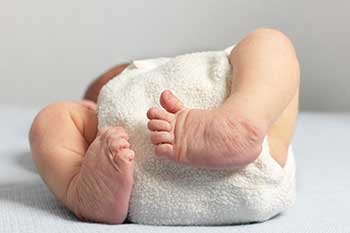
Ultrasound & Fury

I had enjoyed the sonogram. Expectant parents do. It is a bonding opportunity. It is baby's first video. I had already had amniocentesis several weeks earlier, to check for chromosomal abnormalities associated with so-called elderly gravidas like my 38-year-old self.I knew that my baby had 23 neatly matching pairs of chromosomes, that her spinal tube had closed and that she did not have a gruesome defect like anencephaly - - - no brain - - - that would propel me to have an abortion despite having struggled for years to get pregnant.
In sum, I knew my baby was healthy and magnificent, and had gone into the ultrasound expecting added proof of her splendor.
The obstetrician began discussing the scan results. Her tone was hesitant, clipped, distinctly not the voice of reassurance. A siren of panic began wailing in my skull. She said this was fine, that was fine, blah, blah, blah. Come on! I thought angrily. Get to the point! What's wrong with my baby?
Finally, the doctor came to the problem. The left foot. She said the results were difficult to interpret. The foot was in a funny position in the uterus, crammed down deep in the pelvis, so it could be simply a matter of its position at the moment. But the sonographer had not been able to see the profile of the foot, no matter what angle she came at it from, and that is what happens when you have a Clubfoot. My husband and I looked at each other in dumb, grim shock. Clubfoot? Neither of us was sure what a Clubfoot was, what it looked like or how bad a defect it was. The term was so thuddingly ugly and Dickensian that we could not help imagining the condition must be ugly and severe?
The obstetrician told us we had a couple of choices. We could go to a university facility for a more in-depth sonogram, or we could just do nothing and go on with the pregnancy. A Clubfoot would not affect the course of the pregnancy, she said, and any effort to correct it would have to wait until after the baby was born.
Oh, sure, do nothing and forget all about it - - - that is a realistic option, I thought bitterly. Thus we started down a rutted path trudged by so many tens of thousands of people each year, that of medical testing and retesting, the contemporary version of consulting the Oracle of Delphi or a platter of entrails. It is a path that is getting bumpier and more perilous by the month, as ever more high-tech assays are added to the list of prognostic options. . . .
Leaving the obstetrician's office, my husband and I headed for a medical library to do research on Clubfoot. The pictures in textbooks were devastating. Some of the feet were extremely deformed, bent in and up at the ankle to form the letter I. Toes and heels were bunched and twisted. The feet were often stunted, and the calves of the Clubfoot leg were comparatively underdeveloped. . . .
That night, my husband and I did not sleep at all. We wept and wept. Privately, we each pleaded with the universe to make the follow-up sonogram come out normal. We offered up our own body parts in exchange: eyes, arms, feet.
The universe was deaf. The next day, a doctor at a nearby university hospital concurred with the preliminary diagnosis of Clubfoot, subtle though the evidence was. "Good catch!" he said admiringly of the previous sonographer's work.
In the car ride home, I howled so hard I thought the sky would crack; but the sky stayed whole and calm and blue.
A week later, we met with a genetics counselor at a different university to discuss the odds that the Clubfoot might not be an isolated defect, but part of a larger genetic syndrome. We had yet another sonogram, performed by doctors with extensive expertise in ultrasound diagnosis. Happily, they were able to rule out larger genetic anomalies, but of the Clubfoot they were certain. "There is a varus deformity of the left foot," they said bluntly.
I became obsessed with Clubfoot, medically and culturally. I learned that for several months to a year our daughter would have to wear a thigh-high cast designed to twist her foot gradually into a normal, usable position. I learned that the cast would have to be changed every week, that casting alone might not work, and she might require one or more operations. As for the asymmetry of her calves, that would be untreatable and permanent. . . .I also spoke to
mothers of children with clubfeet and was inspired by their stories. They assured me the casts in no way slowed their children down or interfered with motor milestones like crawling. They said that with their feet fixed, the children could walk and run with the best of the nonclubbed masses. Finally, toward the end of my pregnancy, I began to relax.
In late August, I gave birth to a healthy daughter with a lusty set of lungs, a full head of black hair - - - and no Clubfoot at all.
--- Natalie Angier
Science Reporter
The New York Times
November 26, 1996
As quoted in Overdiagnosed
by Dr. H. Robert Welch